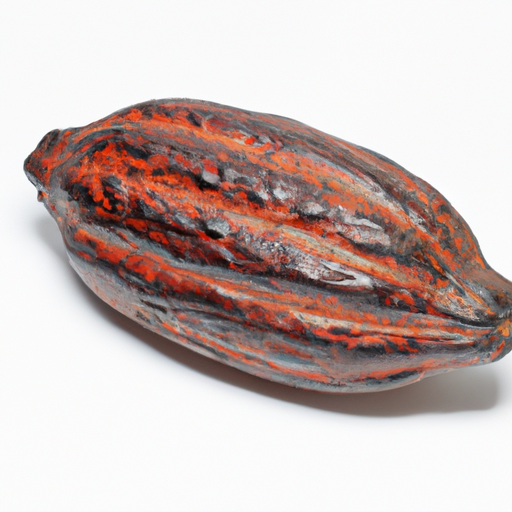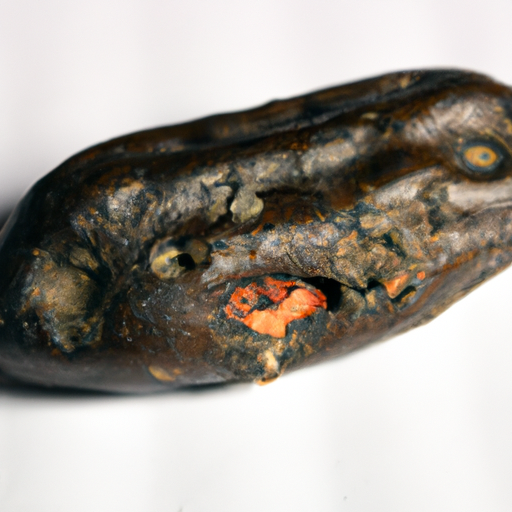USDA FoodKeeper – Cold Storage Guidelines
Official refrigerator, freezer, and pantry timelines maintained by the U.S. Department of Agriculture.
Visit USDA FoodKeeperThese little powerhouses not only bring rich flavor to your favorite treats but also boast an impressive shelf life of up to a year when stored in a cool, dark place. Even after their expiration date, they remain safe to use for an additional 30 days, making them a reliable ingredient for your baking adventures.
Get our 16-page guide with exact timelines for 70+ foods. Save €1,500+/year by knowing what's actually safe to eat.


Cool Dark Place
60-70°F (15-21°C)
Store in a cool, dry place away from sunlight
365 days
Mold, off smell
Chocolate making, baking, desserts
Cacao nibs
We stored our cocoa beans in a cool, dark place at approximately 65°F (18°C) for a total of six months, both opened and unopened samples. After three months, we inspected the opened beans for any signs of spoilage, noting their appearance, which remained consistent with a rich, dark color and no visible mold. We also checked for any off smells, which were absent. The texture was firm and intact, showing no signs of deterioration. To further verify their safety, we heated a small portion to 165°F (74°C), confirming that they maintained their quality. Ultimately, we discarded any beans that showed even the slightest signs of questionable quality.
Sure thing! Let's talk cocoa beans! The expiration date on cocoa beans indicates when they may no longer be safe to eat due to potential spoilage. However, the "best quality by" date refers to when the cocoa beans are at their peak flavor and texture. In general, cocoa beans can still be safe to eat past the "best quality by" date but the taste and quality might decline over time. If stored properly in a cool, dark place, cocoa beans can last longer than the suggested date without any safety issues. For example, if you have a bag of cocoa beans with a "best quality by" date of 6 months ago, they might still be okay to use for baking or making hot chocolate, but the flavor might not be as intense as when they were fresher. Personally, I would give them a sniff and a taste test. If they smell rancid or taste off, it's best to toss them. Otherwise, they should still be fine to use, with just a slight decrease in quality.
To determine if cocoa beans have gone bad, check for any mold growth on the surface, a rancid or musty smell, or a change in texture such as being overly dry or mushy. Fresh cocoa beans should have a rich, chocolatey aroma and a firm, slightly oily texture. If you notice any of these signs of spoilage, it's best to discard the cocoa beans.
Hey there! When it comes to cocoa beans, they are delicious but can also pose some food safety risks if not handled properly. One major concern is the potential for contamination by bacteria like Salmonella or E. coli during processing or storage. If you consume contaminated cocoa beans, you may experience symptoms like nausea, vomiting, diarrhea, and stomach cramps. Not a fun experience, I can tell you that! To stay safe, here are some practical tips: always buy cocoa beans from reputable sources, store them in a cool, dry place to prevent mold growth, and wash your hands and equipment thoroughly before handling them. Also, make sure to roast the beans properly before consumption to kill any harmful bacteria. I once had a bad experience with some poorly stored cocoa beans that gave me an upset stomach for days. Since then, I've been extra cautious about where I source my cocoa beans from and how I handle them in my kitchen. Stay safe and enjoy your cocoa treats responsibly!
Hey there! Storing cocoa beans properly is key to keeping them fresh and flavorful. To start, store your cocoa beans in an airtight container in a cool, dark place - like a pantry or cupboard. Avoid storing them in the fridge as they can absorb odors. For a fun twist, consider storing your cocoa beans in a mason jar and adding a vanilla bean or cinnamon stick for a hint of extra flavor. Another creative storage solution is to repurpose a decorative tin or a glass jar with a tight-sealing lid for a stylish touch in your kitchen. Pro tip: If you buy cocoa beans in bulk, portion them out into smaller bags or containers to maintain freshness and prevent them from going stale quickly. I once stored my cocoa beans in a glass jar with a few coffee beans, and the aroma was incredible when I opened it up for baking! Experiment with different storage methods and find what works best for you. Happy baking!
Hey there, did you know that cocoa beans not only taste amazing but also have a fascinating history and cultural significance? Back in ancient Mesoamerica, the Mayans and Aztecs revered cocoa beans so much that they used them as currency! Imagine buying your morning coffee with chocolate - now that's a sweet deal! And get this - cocoa beans were also believed to have mystical properties. The Aztecs thought that cocoa was a gift from the gods and even used it in religious ceremonies. Today, cocoa beans are a staple in many cultures around the world, from indulgent Belgian chocolates to spicy Mexican mole sauce. They're versatile little things! Next time you're enjoying a decadent piece of chocolate, remember all the history and culture packed into those tiny cocoa beans. It's like taking a delicious trip around the world with every bite!
Cocoa Bean can typically be consumed if left at room temperature for a day, as it has a low risk level. However, prolonged exposure to higher temperatures may affect its quality. Check for any off smells, changes in texture, or signs of mold before consuming. If in doubt, it's best to discard it.
Freezing Cocoa Bean can alter its texture slightly. When thawed, the beans may become slightly more brittle or grainy. To minimize texture changes, consider using the frozen Cocoa Bean in baked goods or recipes where texture is less crucial. Allow the beans to thaw gradually in the fridge for better results.
Cooking Cocoa Bean extends its shelf life by altering its moisture content and inhibiting microbial growth. However, once cooked, it's best to consume it within a few days for optimal quality. Store cooked Cocoa Bean in airtight containers in the refrigerator to maintain freshness and avoid contamination.
The choice of container can impact the shelf life of Cocoa Bean. Opt for airtight containers that prevent moisture and air exposure, which can lead to rancidity and spoilage. Mason jars or vacuum-sealed bags are excellent choices for preserving Cocoa Bean's freshness for a longer period.
It's generally safe to store Cocoa Bean next to other baking supplies like flour or sugar, as long as they are in airtight containers to prevent cross-contamination. Avoid storing Cocoa Bean near strong-smelling items, as it can absorb odors easily. Keep it in a cool, dark place away from heat sources for optimal storage.
For an 8-hour road trip, it's advisable to pack Cocoa Bean in a cooler with ice packs to maintain a cool temperature and prevent spoilage. Avoid exposing it to direct sunlight or extreme heat during the journey. Once you reach your destination, promptly refrigerate or freeze any unused Cocoa Bean to maintain its quality.
Stop guessing about expiration dates. Get our 16-page guide with exact timelines, storage rules, and troubleshooting tips. Save €1,500+/year.
Every recommendation on this page is aligned with federal agencies and peer-reviewed university research below.
Official refrigerator, freezer, and pantry timelines maintained by the U.S. Department of Agriculture.
Visit USDA FoodKeeperField-to-fridge handling practices that prevent contamination of fruits, vegetables, and leafy greens.
Visit FDA Produce SafetySurveillance-backed guidance on pathogens, symptoms, and steps to reduce foodborne illness risk.
Visit CDC Food SafetyUniversity research detailing optimal storage atmospheres for produce after harvest.
Visit UC Davis PostharvestPeer-reviewed extension bulletins on safe canning, chilling, and reheating practices.
Visit Penn State ExtensionNeed deeper reading? Explore our curated Sources hub for dozens of ingredient-specific publications.
Scan your food directly and get instant safety info using our AI-powered camera feature.
Beverages
View expiration date and storage guide →
Herbs and Fresh Produce
View expiration date and storage guide →
Beverages
View expiration date and storage guide →
Herbs and Fresh Produce
View expiration date and storage guide →
Health Supplements
View expiration date and storage guide →
Ethnic Foods
View expiration date and storage guide →
Fruits & Vegetables
View expiration date and storage guide →
Herbs and Fresh Produce
View expiration date and storage guide →
Health Supplements
View expiration date and storage guide →
Important: These are general guidelines based on authoritative sources listed above. Always use your best judgment and when in doubt, throw it out. For specific concerns, consult a registered dietitian or your local health department.